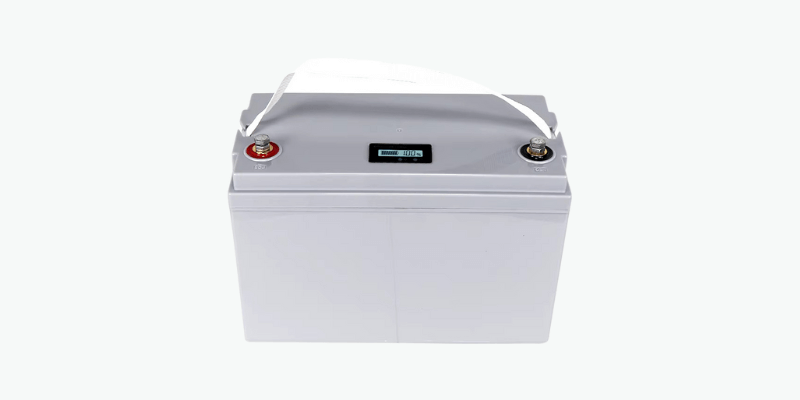Per le avventure nautiche e marine di successo, è essenziale avere una fonte di energia affidabile. Le batterie marine sono progettate per fornire energia affidabile per le barche e possono resistere a condizioni dure come esposizione all'acqua salata, vibrazioni e temperature estreme. Questo post sul blog coprirà le basi delle batterie marine e come scegliere quella giusta per le tue esigenze.
Cosa sono le batterie marine?
Le batterie marine sono batterie speciali progettate per alimentare barche e altri veicoli marini. Superino vibrazioni, temperature estreme e umidità.
Esistono tre tipi di batterie marine: avvio, ciclo profondo e doppio uso. Le batterie di avvio assicurano una forte accensione del motore, mentre le batterie a ciclo profonda forniscono energia costante per l'uso esteso di sistemi elettrici. Le batterie a doppio uso svolgono entrambe le funzioni.

Batterie di avviamento
Le batterie di avviamento marine o le batterie marine sono batterie al piombo-acido progettate per avviare i motori della barca. Forniscono elevati amplificatori di carrello (CA) e amplificatori a freddo (CCA) per l'accensione rapida.
CA misura l'erogazione di energia a 32 ° F (0 ° C) per 30 secondi, adatto a climi più lievi. CCA indica la corrente massima che una batteria può consegnare a 0 ° F (-18 ° C), cruciale per l'avvio del freddo quando l'olio del motore è più spesso. Per ulteriori informazioni su CCA, controllare il nostro post sul blog "Cosa significa CCA su una batteria. "

Batterie a ciclo profondo
Ciclo profondo Le batterie marine forniscono energia costante su periodi prolungati, rendendole ideali per applicazioni continue.
A differenza delle batterie iniziali, che forniscono brevi esplosioni di alta corrente per l'avvio del motore, le batterie a ciclo profondo hanno piastre di piombo più spesse per resistere a ripetute scariche e ricariche profonde. Alimentano vari sistemi e elettrodomestici, tra cui luci, motori, cercatori di pesce, radio e frigoriferi.
Queste batterie sono necessarie per una grande potenza durante le attività di nautica, consentendo ai navigatori di godersi il tempo in acqua senza preoccuparsi delle interruzioni.

Batterie a doppio scopo
Le batterie a doppio uso combinano le caratteristiche di avvantaggini e del ciclo profondo, fornendo la potenza per avviare un motore supportando l'elettronica di bordo. Molte moderne batterie marine a ciclo profondo offrono questa capacità.
Per le barche più piccole con motori meno impegnativi, è sufficiente una batteria a doppia scoperta di qualità. Tuttavia, le barche più grandi con motori potenti o più accessori di solito richiedono una batteria dedicata e separate batterie a ciclo profondo per l'alimentazione degli accessori.

In che modo le batterie marine sono diverse?
Le batterie marine sono progettate per affrontare le sfide dell'ambiente marino, tra cui movimento, vibrazione e umidità. Hanno una costruzione e componenti migliorati che proteggono le piastre della batteria dai danni da vibrazione durante le acque ruvide o le alte velocità.
Per affrontare i rischi per la sicurezza, molte batterie marine includono gli arretratori di scintilla per impedire alle esplosioni di scintille accidentali durante la ricarica.
Inoltre, resistono alla corrosione dall'acqua salata utilizzando materiali durevoli come leghe di piombo.
Infine, le batterie marine offrono vari tipi di terminali e dimensioni per la compatibilità con diverse configurazioni di barche e sistemi elettrici, inclusi progetti specializzati per prevenire cortocircuiti o consentire funzionalità di connessione rapida.

Di che taglia la batteria marina ho bisogno?
Le batterie marine sono disponibili in diverse dimensioni per soddisfare varie esigenze di alimentazione e soddisfare specifici scomparti della barca, seguendo le specifiche della dimensione del gruppo BCI standard del settore. Le dimensioni più grandi offrono una maggiore capacità di alimentazione di elettronica multipla, mentre le dimensioni più piccole si adattano alle barche con requisiti di alimentazione più bassi. La scelta della giusta dimensione garantisce prestazioni ottimali, uso di spazio efficiente e potenza affidabile durante le avventure in barca.
Litio o piombo acido?
Le batterie al litio sono superiori alle batterie a piombo per applicazioni marine per diversi motivi. La loro alta densità di energia consente una maggiore conservazione di energia in un pacchetto più leggero rispetto alle batterie al piombo-acido, migliorando le prestazioni della barca e l'efficienza del carburante. Hanno anche una durata del ciclo impressionante, durando migliaia di cicli di carica che riducono la frequenza di sostituzione.
Inoltre, le batterie al litio si caricano più in modo più rapido ed efficiente, dandoti più tempo in acqua.
Sebbene le batterie al litio abbiano un costo iniziale più elevato, la loro durata e longevità forniscono un costo-efficacia a lungo termine. Al contrario, le batterie al piombo-acido sono economiche con costi iniziali più bassi e un comprovato record di sicurezza nel settore marino. Sono particolarmente adatti per l'avvio di applicazioni a causa della mancanza di protezioni sovrano.

Posso caricare una batteria marina con un caricabatterie normale?
È possibile caricare una batteria marina con un caricabatterie normale se corrisponde alla tensione, ma non è consigliato. I caricabatterie regolari potrebbero non soddisfare le esigenze specifiche delle batterie marine del ciclo profondo, rischiando di sovraccarico o calore eccessivo. È meglio utilizzare un caricabatterie marine dedicato progettato per batterie a ciclo profondo con il profilo di ricarica appropriato.
Per le batterie del litio marino, un dedicato Caricatore al litio accelererà il processo. Sebbene possa essere una spesa extra, molti proprietari trovano utile per prestazioni ottimali della batteria.
Quanto durano le batterie marine?
Le batterie marine tradizionali in genere durano dai tre ai sei anni, simili alle batterie per auto, ma la durata della vita varia in base all'utilizzo, alla manutenzione e al tipo. Le batterie iniziali generalmente durano dai tre ai cinque anni. Le batterie a ciclo profondo sono progettate per un uso più pesante e durano circa 4-6 anni. Le batterie a doppio uso vanno da tre a sei anni, a seconda del loro uso nella nave. Ma se usi le batterie marine LifePO4, possono durare oltre 10 anni.

